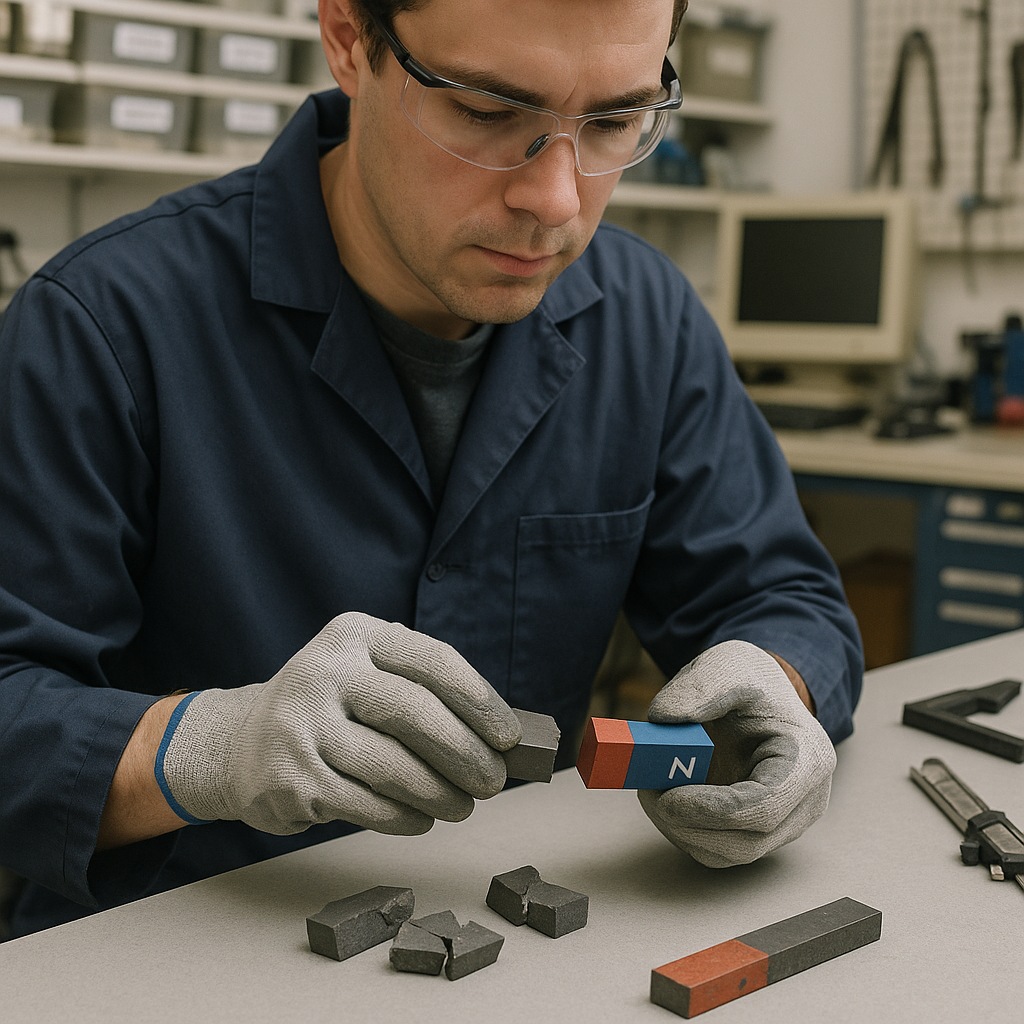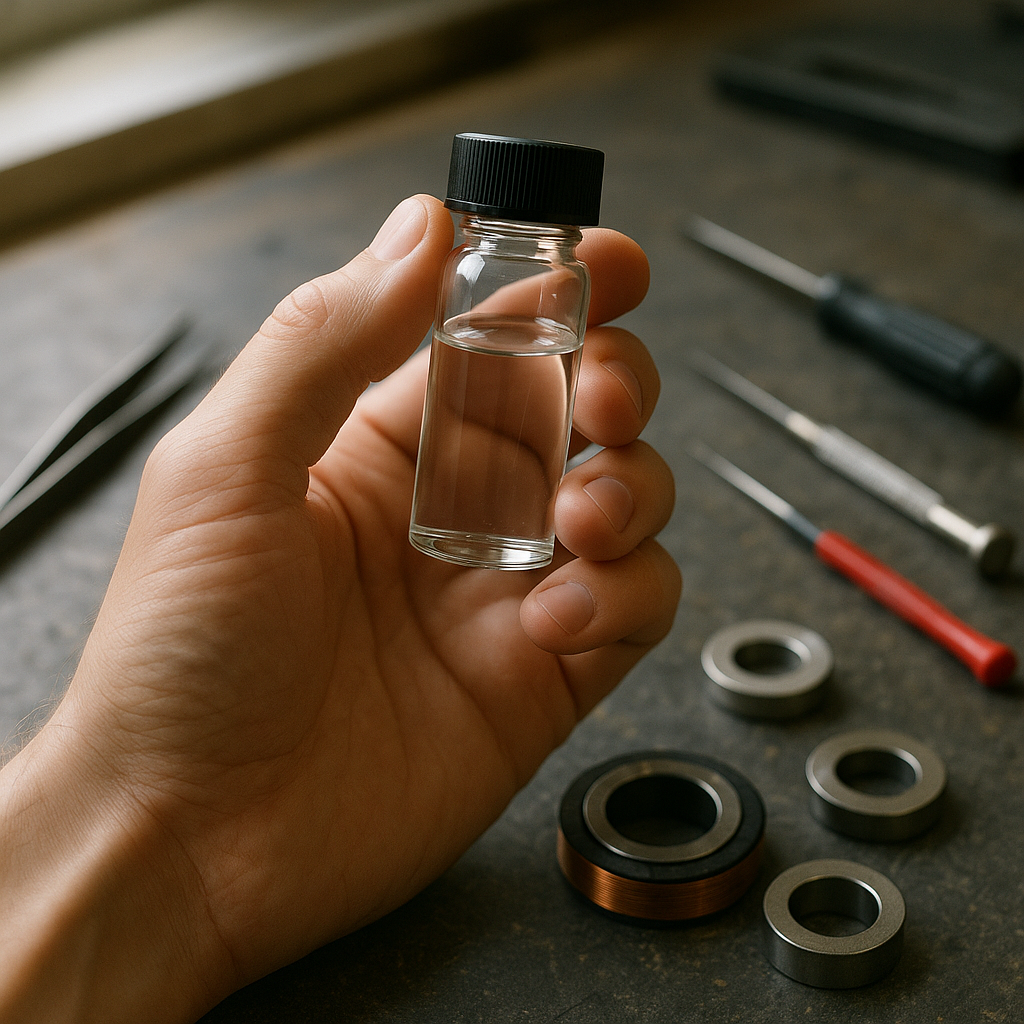5901 Botham Jean Blvd, Dallas, TX 75215
From Alloy to Element: The 3 Recycling Processes for Samarium-Cobalt Magnets
November 4, 2025Samarium-cobalt magnets power some of the world’s most demanding applications, from aerospace systems to medical devices operating at extreme temperatures. These specialized magnets contain two critical metals subject to severe supply constraints. The recycling of these valuable components is essential for industrial sustainability.
SmCo magnets rely on samarium and cobalt, both rare earth metals with limited global availability and high economic value. These magnets excel in high-temperature environments due to their outstanding coercivity, superior corrosion resistance, and excellent thermal stability. Although SmCo magnets represent less than 2% of the permanent magnet market, their applications in consumer electronics, automotive technology, aerospace, and military equipment continue to expand.
The recycling of SmCo magnets can mitigate the supply risk of samarium and cobalt, close the materials loop, and reduce the environmental issues associated with primary mining and ore processing. Manufacturing these magnets generates substantial waste, and effective metal recovery from spent magnets supports a circular economy by returning valuable elements to the supply chain. This approach lessens our dependence on environmentally intensive mining operations while addressing the growing demand for these critical materials.
Direct Recycling Method for Repurposing Magnet Waste

Direct recycling is the most efficient approach to recovering SmCo magnet waste. This process converts spent magnets directly into alloy powder without breaking the materials into individual elements first.
The method works by maintaining the existing metal ratios in the waste material. It’s most effective when the waste stream maintains a consistent chemical composition and the magnets remain relatively intact without extensive surface oxidation.
Material Preparation for Direct Recycling
The direct recycling process begins with careful preparation of the raw material mix. We combine 20-60% SmCo magnet waste with fresh metals to achieve optimal composition. The metal mixture includes specific amounts of samarium, cobalt, iron, copper, and zirconium.
This blending approach ensures the final alloy powder retains the magnetic properties needed for new permanent magnet production. The percentage of waste material depends on the original magnet composition and the target specifications for the recycled product.
Processing Steps in Direct Recycling
The prepared material mix undergoes critical processing stages. First, we melt the combined materials at controlled temperatures to achieve uniform composition throughout the mixture.
Next, the pulverizing process breaks down the melted material into fine particles, typically measuring 4-7 micrometers in diameter. This size range is crucial for proper magnetic alignment in the final product.
The fine particles then undergo shaping through specialized equipment. We use a forcing press followed by a cold isostatic press to achieve the desired density and shape. This dual-pressing approach ensures uniform particle distribution and eliminates air pockets that could weaken the final magnet.
Final Product Creation
The shaped material requires sintering to bond the particles permanently. This high-temperature process creates strong metallic bonds between the fine particles. The sintering temperature and duration depend on the specific alloy composition.
Heat treatment follows, optimizing the magnetic properties. This controlled cooling process aligns the crystal structure to maximize coercivity and magnetic strength. The result is a new, functional permanent magnet with properties comparable to magnets made from virgin materials.
Research shows that direct recycling offers superior efficiency compared to indirect recycling methods, making it the preferred approach when waste streams meet the necessary composition requirements. The process typically achieves recovery rates above 90% while maintaining excellent magnetic performance in the recycled magnets.
How Does Hydrometallurgy Recover Pure Elements From Magnet Scrap

Hydrometallurgy is a sophisticated chemical separation method that turns discarded magnet waste into valuable pure materials. This indirect recycling process systematically breaks down complex magnetic alloys through controlled chemical reactions. It operates at relatively low temperatures compared to pyrometallurgical alternatives, making it both energy efficient and environmentally sustainable.
The initial leaching stage involves dissolving the magnet material using dilute hydrochloric acid solutions. This acid selectively dissolves the metal components while leaving behind any inorganic impurities. The concentration of hydrochloric acid is deliberately kept low to manage the reaction rate and prevent unwanted side reactions. Complete dissolution typically occurs within several hours at ambient temperature, forming a clear solution with all the dissolved metals.
Chemical separation begins immediately after successful leaching. The dissolved solution contains a mixture of rare earth elements, iron, and cobalt in ionic form. pH adjustment is critical at this stage, as different metals precipitate at specific acidity levels. Operators carefully monitor and control the solution’s pH to ensure selective precipitation of target elements.
Oxalic acid precipitation is the primary separation mechanism for rare earth elements. When oxalic acid contacts the leach solution, it forms insoluble oxalate compounds with samarium and other rare earths. These oxalate precipitates appear as fine crystals that settle at the bottom of the reaction vessel. The precipitation reaction occurs rapidly and achieves high recovery rates exceeding 98% for rare earth elements.
Iron oxidation and filtration represent the next separation phase. Iron initially exists as ferrous ions in the acid solution but needs conversion to the ferric form for effective removal. Chemical oxidizing agents promote this transformation, allowing iron to precipitate as ferric hydroxide when the pH increases. Filtration then removes the iron precipitate, leaving a purified solution.
Cobalt precipitation follows similar principles but requires specific conditions for optimal recovery. Oxalic acid again acts as the precipitating agent, forming cobalt oxalate compounds. The precipitation occurs at controlled pH levels to prevent co-precipitation of remaining rare earth elements, ensuring high purity in the final cobalt product.
Calcination transforms the precipitated oxalates into valuable oxide products. Samarium oxalate decomposes under controlled heating to produce solid samarium oxide, a valuable precursor for new magnet production. Similarly, cobalt oxalate converts to cobalt oxide through thermal decomposition. The calcination temperature and atmosphere require careful control to achieve the desired oxide phase and purity.
This hydrometallurgical approach offers significant advantages over alternative recycling methods. The simple process design requires minimal specialized equipment and operates at moderate temperatures. Low production costs result from reduced energy requirements and common chemical reagents. High recovery rates ensure maximum value extraction from waste materials. Most importantly, the process generates minimal secondary environmental pollution compared to high-temperature smelting operations.
What is the Role of Ionic Liquids in Advanced Magnet Recycling?

Ionic liquids are a breakthrough in advanced magnet recycling processes, providing a sustainable alternative to traditional hydrometallurgical methods that often rely on volatile organic compounds and harsh mineral acids. They function as recyclable solvents capable of safely dissolving metals while minimizing environmental impact.
In the oxidative dissolution process, spent magnet powder comes into contact with the ionic liquid solvent. Trichloride ionic liquids, like trihexyltetradecylphosphonium trichloride, serve as powerful oxidizing agents that dissolve metallic components at relatively mild temperatures. This solvometallurgical approach eliminates the need to manage dangerous chlorine gas, as the ionic liquid safely retains the oxidizing power in its molecular structure.
Metal separation is achieved through a series of carefully designed stripping steps. Each aqueous stripping solution targets specific metals based on their chemical properties and affinities. Typically, samarium is stripped first using sodium chloride solutions, followed by cobalt with water, and finally copper with ammonia solutions.
Ionic liquids intensify the recycling process by combining traditional dissolution and solvent extraction into a single step. This integration reduces the number of processing stages compared to conventional methods, achieving high separation efficiencies while maintaining compact equipment footprints and reducing chemical inventories.
The ability to regenerate ionic liquids adds significant value for sustainable operations. After metal stripping, the ionic liquid can be restored to its original oxidizing capacity through controlled chlorine addition. Research shows that these solvents retain their dissolution performance across multiple recycling cycles without significant degradation.
Environmental benefits extend beyond solvent reusability to include reduced waste generation and enhanced worker safety. The negligible vapor pressure of ionic liquids prevents atmospheric emissions during processing. Additionally, the controlled nature of metal dissolution avoids the formation of hazardous gases typically associated with traditional chlorination processes.
The Future of Samarium-Cobalt Magnet Recycling

Various methods exist for recycling samarium-cobalt magnets, each offering unique benefits for resource sustainability. Direct recycling efficiently transforms waste magnets into new magnetic materials while maintaining the material’s structural integrity and magnetic properties. Indirect methods like hydrometallurgy and advanced solvometallurgy using ionic liquids provide high-purity samarium and cobalt recovery from spent magnets. These complementary approaches create multiple pathways for critical materials recovery, reducing supply chain vulnerabilities, offering significant economic benefits, and minimizing environmental impacts associated with primary mining operations.
By closing the material loop through comprehensive recycling technologies, SmCo magnet recycling plays a crucial role in the global transition to a circular economy. These innovative processes not only secure sustainable access to rare earth elements but also foster a more resilient and environmentally responsible future for advanced manufacturing industries. For comprehensive recycling solutions that support your organization’s sustainability goals, contact Okon Recycling at 214-717-4083.
